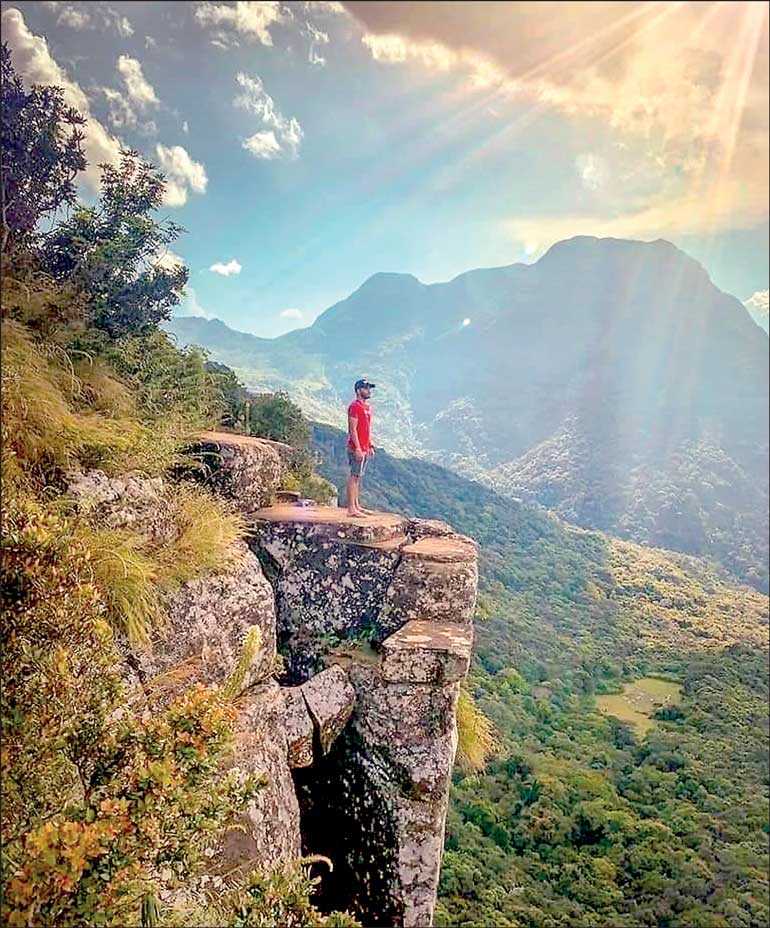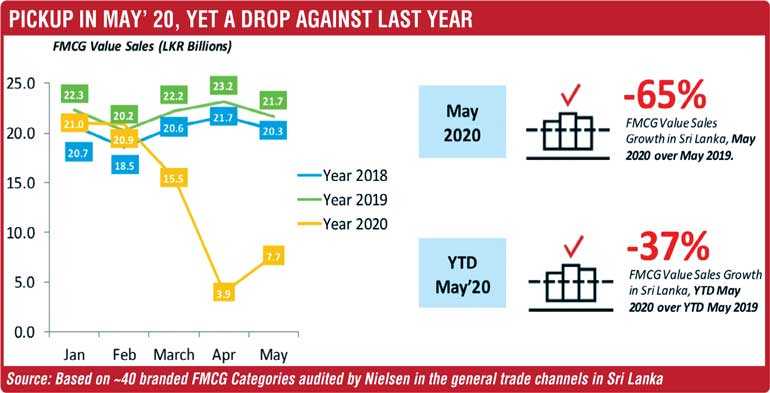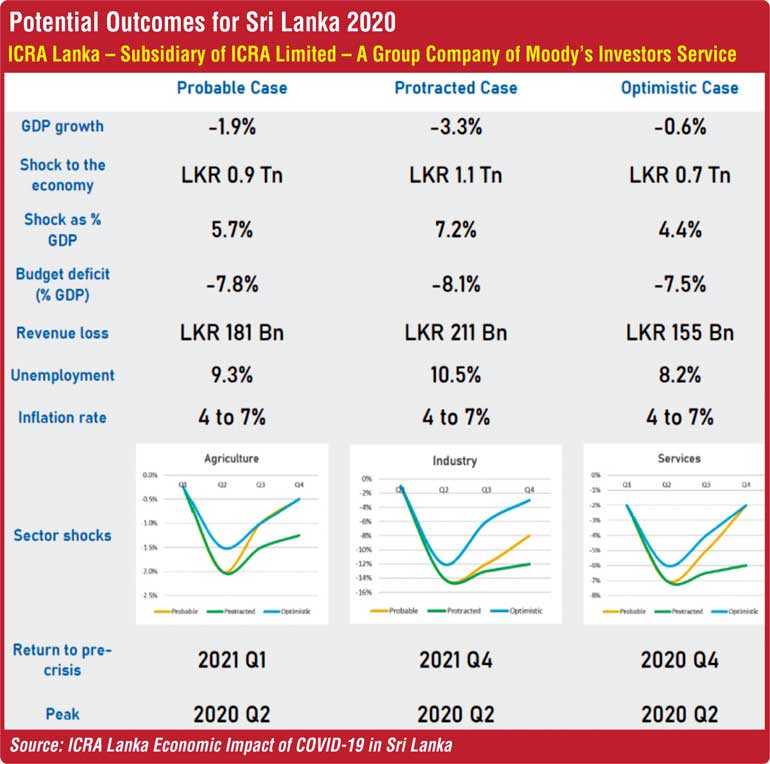Sunday Feb 23, 2025
Sunday Feb 23, 2025
Friday, 3 July 2020 00:20 - - {{hitsCtrl.values.hits}}



Last week was a tough week for the World Health Organization (WHO) as the single day COVID-19 cases crossed 183,000, which was the highest seen globally in the backdrop of 9.8 million people  contracting the virus and 495,000 succumbing to the lethal virus.
contracting the virus and 495,000 succumbing to the lethal virus.
What is very alarming is that WHO announced that the earliest that the world can expect a vaccine would be in around 12-18 months from now, and the funding requirement until that time will be $ 11 billion, which is a tough task for an economy in recession.
Sri Lanka: Crossroads
Sri Lanka on the other hand is at a high point for a well-managed tracing and treatment performance. Just over 2,000 cases of COVID-19 cases and almost 73% of them recovering with just 11 deaths is a brilliant performance given that India and Pakistan are losing their grip on the COVID-19 issue.
To be specific, India experienced 18,000 new COVID-19 cases in a single day last week with the cumulative number hitting half a million cases. Fifteen thousand deaths does not augur well for the country and its health infrastructure.
Let’s accept it, the general public as a whole must be commended for following the stipulations issued by the Ministry of Health and the Chairman of the COVID-19 Task Force. The Sri Lankan health infrastructure has come in for praise given that the recovery rate of 73% plus is a brilliant performance under any circumstances. Social organisations like Rotary, which extended support to the Government by creating awareness among the local community for attitude change via the Olympic athletes, cricketers and ruggerites and thereafter over 50 clubs to cascading the ‘new normal’ across the country sure supported the Government machinery at play.
Global economy to contract by -4.9%
Whilst the pandemic keeps bulldozing across different countries, Brazil and Russia are worst hit and are termed hot spots globally. The other big story hitting the media last week was that South Korea, Chennai and Beijing were going back to a lockdown due to the second wave.
This is exactly what Sri Lanka must ensure it can avoid given that the economy took a beating with FMCG retail sales declining by -67% and cumulative numbers up to April touching a -37% performance as per the top research agency Nielsen.
In this backdrop, the International Monetary Fund( IMF) predicted that the global economy would contract by -4.9% whilst the United States would be hit -8% and India also touching a negative -5%. All this does not augur well globally and for South Asia.
Sri Lanka exports -29% whilst remittances hit -9%
If we get into specifics, Sri Lanka’s export earnings fell by 29% in the first five months (up to May) to $ 3,456 million compared to $ 4,845 million last year. This is essentially driven by the apparel sector which is at -48.2% with $ 219 million compared to $ 422.7 million achieved last year.
The challenge here is how the one million people employed in this sector and can be engaged in the near term. The Labour Commissioner states that almost 30% of blue colour workers have lost their jobs. There might be a correlation on this data to this industry.
The good news is the performance in May being better than April, which is some relief given the negativity in the marketplace. A notable new product in the export basket was Personal Protective Equipment (PPE) to the US market in particular. I guess this industry will have to continue to innovate to cater to the new normal. Unfortunately the riots in the US and the up and coming elections will not help the industry recover given that most cities are being hit by the second wave of the COVID-19.
On the other hand tea exports declined by a marginal -14% to $ 108 million. The aggressive nature of the companies in the industry must be commended. Companies like Akbars have demonstrated the ‘spirit of humanity’ in the DNA of the working culture. Just five days into the pandemic hitting Sri Lanka and many companies putting their shutters up, the company was back on track and the first tea company to be certified as a ‘COVID-19 Control Environment’ by the Sri Lanka Standards Institution. Being the number one tea exporter, the company has set the standards for the industry that will help reverse the trends in the marketplace.
Coconut and coconut-based products fell by -9% to $ 25 million whilst rubber products exports declined by -36% to $ 51.2 million. This will get corrected with companies like Trellerborg demonstrating to the industry how a company can get back to the working routine amidst even a pandemic. The company lost only three days of work due to the stringent hygiene and sanitation protocols that were put in place and the company also pushed the limits with strong leadership to become the first COVID-19 Control Certified organisation in Sri Lanka and maybe the first in the world.
The international company put Sri Lanka on the global map and the Rotary International Trustee for 2020-’21 cited Sri Lanka as a case in point that almost a million business leaders from 200 companies got exposed to. The latest we heard was that the global entity is planning to increase the volumes manufactured out of Sri Lanka. I guess these are the stories that will build Sri Lanka to be a dominant player in the global export arena.
Fisheries products crashed by -39.3% to $ 12 million and spices and essential oil exports declined by -16% to $ 19 million compared to last year but will pick up with the markets once again opening in Europe and Middle East. The worrying factor is Brazil which is the new hotspot for the COVID-19 virus in the South American region.
Gem and jewellery hit -78.4% to 6.7 million, electrical and electronic products declined by 37.4%. Paper and paper products were at -38%, non-metallic mineral products at -25%, food and feed and beverages by -22%, chemicals and plastic products are also at a negative trail. This is alarming but I guess will get corrected as Sri Lanka’s market share globally is below 3% and hence we will have a lesser impact globally.
A point that we must be conscious of is on the export volume index and the unit value index, the absolute numbers have declined by 50.6% and 28.4% in the month of April, which means that the decline in exports was driven by lower volumes and lower prices, compared to April 2019.
We will have to watch if the price point correction will happen or whether this will be the global trend as consumers will look for price-savvy purchases on the shelf and smaller pack sizes across categories. If this will be the new normal, I guess Sri Lanka will have to change its export strategy in the near future.
On a cumulative basis, worker remittances declined by -9% to $ 1,975 million during the first four months of 2020. Given the thrust to attack the lethal virus, the hammer and dance theory was practiced by different countries and most of the migrant workers have headed back home. This means that this number cannot be positive in the months to come. This will hit the Sri Lanka economy and it will have to become competitive to bridge the deficit in foreign exchange income.
The Sri Lankan Rupee crashing by 9.1% against the dollar in April and then recovering due to the restrictions in imports indicated the vulnerability of the economy against external shocks. This same behaviour will be seen across countries but the latest IMF estimate of a -4.9% decline of GDP globally means that the world will be hitting a recession that will be very hurtful. The good news is that the recovery will be also swift, which is the silver lining.
SL tourism was hit pre-COVID-19
With the run rate from tourism at $ 956 million during the first four months of 2020, it means that the decline is steep at 44.1%.
A point to note is that Sri Lanka Tourism was hit way before the COVID-19 pandemic. Tourist arrivals to Sri Lanka were hit post the Easter Sunday attacks and March 2020 was the 12th consecutive month in in succession to register a negative growth.
The previous Government made a mockery of the tourism industry where for five years it tried to launch a global marketing campaign and due to political fingering ultimately got thrown out of power in 2019 with the biggest casualty being the tourism sector.
Neighbouring Maldives launched two campaigns globally post the Easter attacks and was on the rebound when the COVID-19 pandemic hit the world. I guess it’s time that Sri Lanka learnt from Maldives on how to run global marketing campaigns.
March 2020 registered approximately 71,000 tourists – a drop of almost 70.8% when compared to the same period last year. This was mainly due to the due to the termination of all passenger flights and ship arrivals into Sri Lanka from 18 March.
Tourism – trends and future
A point to note is the trend before the pandemic and how we can drive the same wave post 1 August so that we build on the mindset that existed in a traveller’s mind. India accounted for 17.7% of the island’s tourist market share – the highest in March. However, with India being the epicentre of the COVID-19 pandemic in South Asia as at today, selecting India as a key target market from 1 August will not be a reality.
Russia chipped in with 12.4% followed by the UK with 11.2%. Tourist arrivals from China – the epicentre of COVID-19 – came down drastically by 92.9%, with figures of 1,600 when compared to March last year during which at least 23,000 arrivals were recorded. However, it is noteworthy that arrivals from Kazakhstan have recorded an increase of 79.7%, which can be a pointer to the new strategy that must be driven in the near future.
Given that I am a marketer by profession, today’s situation that Sri Lanka is in cannot ever be replicated. We have a clean sheet to start from and we can now strategise and develop a new positioning for Sri Lanka globally with a strong marketing campaign that can propel the country to a new trajectory in the tourism industry.
The current thinking among policymakers towards the industry is also in line with this strategy and I am confident that we can use the current opportunity wisely given the talent in the industry in the public sector and private sector that accounts for 98% of the industry.
My view – next big idea
Whilst we can be rhetoric to say that Sri Lanka is resilient, WHO states that on COVID-19 a country will be tested on the areas of skill of governance, experience of the healthcare sector and richness in human capital. Based on the performance so far, Sri Lanka has done well.
However, based on Artificial Intelligence (AI), what is being revealed is that the only way to manage an economy is with the hammer and dance approach, meaning you will lockdown an economy so that you allow the virus to die off in geographies, whilst the areas that are not affected are made to dance and get the economy to kick in.
If a country has deep pockets, then each person can be paid two months of salary by the State and the country can be allowed to heal with a total lockdown, which is a very tough challenge for any government to practice. If we open a market too early then we will have money but at the expense of more lives. Hence the management of COVID-19 is more a math game. This is why countries like the USA predicts using AI that 300,000 people will die from the virus whilst as at now the number stands at 140,000.
Next step
Hence it’s paramount that we get together and stop the spread using the guidelines given by Ministry of Health and WHO. We must ensure that all properties are properly audited and certified by a reputed entity stating ‘COVID-19 Control Environment’ so that we facilitate local industry to start working and domestic tourism to kick in.
Thereafter, controlled tourism via a government-to-government facilitation which is bilateral with strict checks and balances can be one way in which we open the country to tourism.
[Dr Rohantha Athukorala was the former Chairman – Sri Lanka Export Development Board and Sri Lanka Tourism and was awarded the ‘Mahatma Ghandhi Award for Public Sector Leadership’. He is the Country Head for an Artificial Intelligence (AI) company for South Asia.]
Discover Kapruka, the leading online shopping platform in Sri Lanka, where you can conveniently send Gifts and Flowers to your loved ones for any event including Valentine ’s Day. Explore a wide range of popular Shopping Categories on Kapruka, including Toys, Groceries, Electronics, Birthday Cakes, Fruits, Chocolates, Flower Bouquets, Clothing, Watches, Lingerie, Gift Sets and Jewellery. Also if you’re interested in selling with Kapruka, Partner Central by Kapruka is the best solution to start with. Moreover, through Kapruka Global Shop, you can also enjoy the convenience of purchasing products from renowned platforms like Amazon and eBay and have them delivered to Sri Lanka.
Discover Kapruka, the leading online shopping platform in Sri Lanka, where you can conveniently send Gifts and Flowers to your loved ones for any event including Valentine ’s Day. Explore a wide range of popular Shopping Categories on Kapruka, including Toys, Groceries, Electronics, Birthday Cakes, Fruits, Chocolates, Flower Bouquets, Clothing, Watches, Lingerie, Gift Sets and Jewellery. Also if you’re interested in selling with Kapruka, Partner Central by Kapruka is the best solution to start with. Moreover, through Kapruka Global Shop, you can also enjoy the convenience of purchasing products from renowned platforms like Amazon and eBay and have them delivered to Sri Lanka.